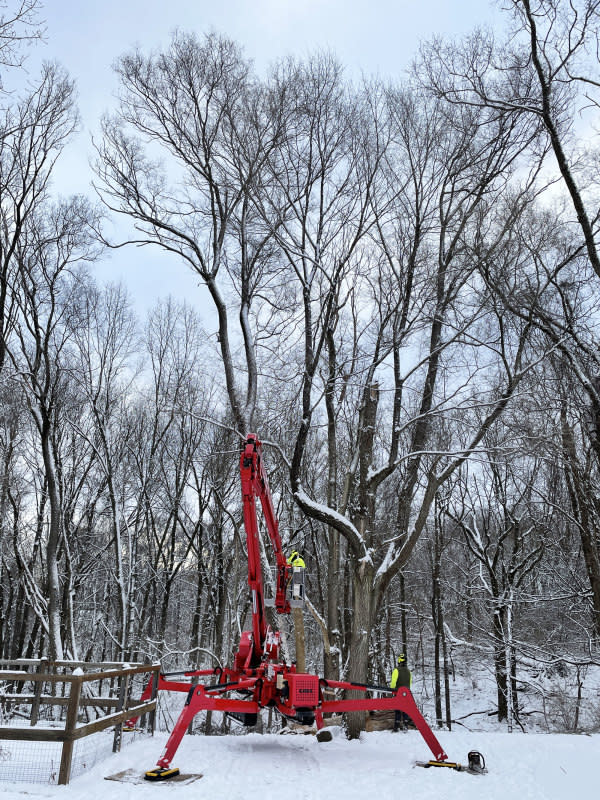How to Evaluate Your Backyard Trees for Damage and Disease
During the winter, when trees enter their dormant season, homeowners should prioritize inspections to ensure their health and safety. While you might think that summer is a better time to do visual assessments, it's easier for the pros to spot diseases, infestations, and lesions while all of the leaves are off deciduous trees. To understand the logic behind a wintertime tree risk assessment, we connected with Blake Watkins, Operations Partner at Monster Tree Service and ISA Board Certified Master Arborist.
"Mature trees can help increase home values and decrease heating costs, so it’s important to consistently monitor the health of your backyard," points out Watkins. Not only for the well-being of the tree, but the safety of the surrounding property and residents, and to prevent bigger tree issues.
Wintertime Tree Evaluations Are the Best
"Your trees won’t have as many leaves this time of year," Watkins acknowledges. "It’s much easier for an arborist to see the true structure of a tree and to spot hazardous branches before new leaves emerge in spring. Plus, most professional tree care services are slow in the winter but can book up quickly once spring has sprung. Winter is a great time to have them professionally inspected. Contacting your local arborist now can help you get ahead of the curve and prepare for spring or summer services."
He adds, "The sooner you can identify problems, the better. Taking care of those issues ahead of time can reduce the risk of potential damage caused to your home and the costs associated with repairs."

Emily Fazio
What will an arborist look for during regular tree assessments?
Review the overall tree condition including the tree circumference, and the shape of the canopy.
Check for healthy tree bark (or loose bark), obvious signs of stress or tree damage,
Flag safety concerns and other potential risks, like dead branches (yes, they can identify dead wood during the winter!), or the risk of branch failure
Check for healthy growth at branch tips, and make sure there's no new growth from the base
Look for signs of decay
Check soil conditions (including soil compaction or soil erosion)
Check for healthy roots. Unhealthy roots may predict nutrient deficiencies.
Assess the life expectancy
They can help identify species of trees; you wouldn't be the first to ask if you had an oak tree or a maple tree species.
Related: These 3 Bad Things Can Happen When You Keep Leaves on Your Roof
How to Do a Visual Inspection
Homeowners can often tell if there are issues on their property. Taking steps to inspect regularly during the winter months can make it easier to assess changes and flag potential hazards. Watkins shared these tips for homeowners:
Check to see if there's 3-5’ of clearance from your house. If you're worried about large branches
Check for broken or hanging branches that may be weakening from winter snowfall.
Walk around the tree trunk to look for wounds, peeling bark, fungal growth, or mushrooms.
Related: Can Leaves Stay on Your Lawn All Winter?
When to Call an Arborist
"If you notice anything that seems dangerous, call a professional arborist for an assessment," recommends Watkins. "It’s good practice to have an ISA Certified Arborist® on-site at least once every 3 years, especially if you have large shade trees near your home."
